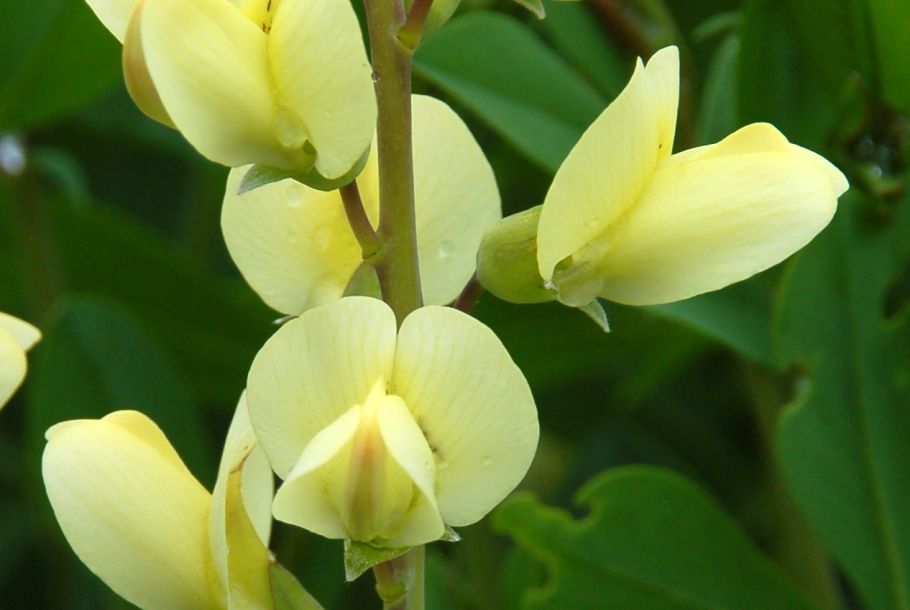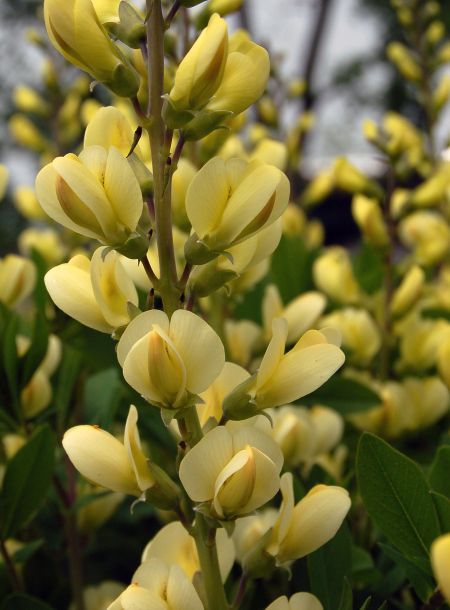Baptisia Mojito
Super heavy flower production and early flowering.
Selected especially for its heavy flower production, the light lemon-green flowers contrast nicely with the deep lime-green foliage. ‘Mojito’ begins flowering in early to mid-May, somewhat ahead of most other false indigos (USDA Zone 5). It also blooms longer than most false indigos—upward of four weeks. The vase-shaped habit in spring gives way to a more rounded habit during the remainder of the growing season. ‘Mojito’ has strong stems that don’t lodge, and its attractive foliage is darker in color than most other false indigos. This complex hybrid was developed from Baptisia australis, B. bracteata, and B. sphaerocarpa.
Who Am I?
-
Common Name:Mojito false indigo
-
Botanical Name:Baptisia 'Mojito' PP25987
-
Type:Perennial
-
U.S. Native:YES



Cultural Details
TYPE
U.S. NATIVE
-
Light:Full sun
-
Soil:Moist, but well-drained, fairly adaptable to many soils
-
Moisture:Drought tolerant once established
-
Hardiness Zone4-9
-
Bloom Time:Spring
-
Bloom Color:Pale yellow
-
Fruit TimeFall
-
Fruit ColorGray
-
Size:3.5' tall by 5' wide
-
Diseases & Pests:False indigos exhibit good to excellent disease resistance. A seed weevil will predate the seed, but this does not detract from either plant health or display value. The genista broom moth caterpillar (Uresiphita reversalis) can seriously defoliate plants of Baptisia, but this tends to be more of a problem in warmer climes.
What Makes Me Special?
Landscape Use
Origin
The Prairieblues™ false indigos were developed by Jim Ault, Ph.D., at the Chicago Botanic Garden from crosses made between 1999 and 2004. The selections were developed from crossing Baptisia albescens (formerly B. alba), B. australis var. australis, B. australis var. minor, B. bracteata (formerly B. leucophaea), B. sphaerocarpa, and B. tinctoria in various c ombinations. All parent plants and selections were grown in-ground at the Chicago Botanic Garden (USDA Zone 5b) during the breeding and selection process.










